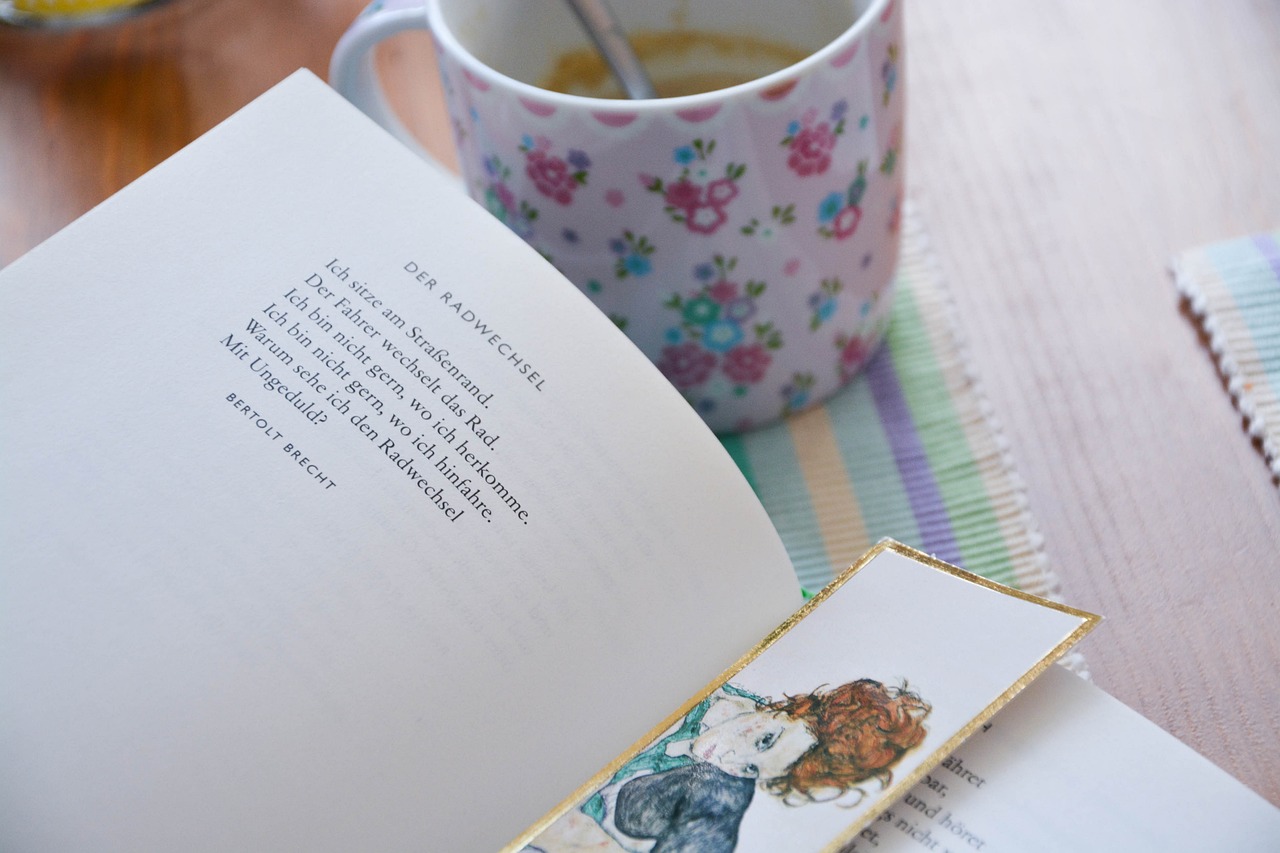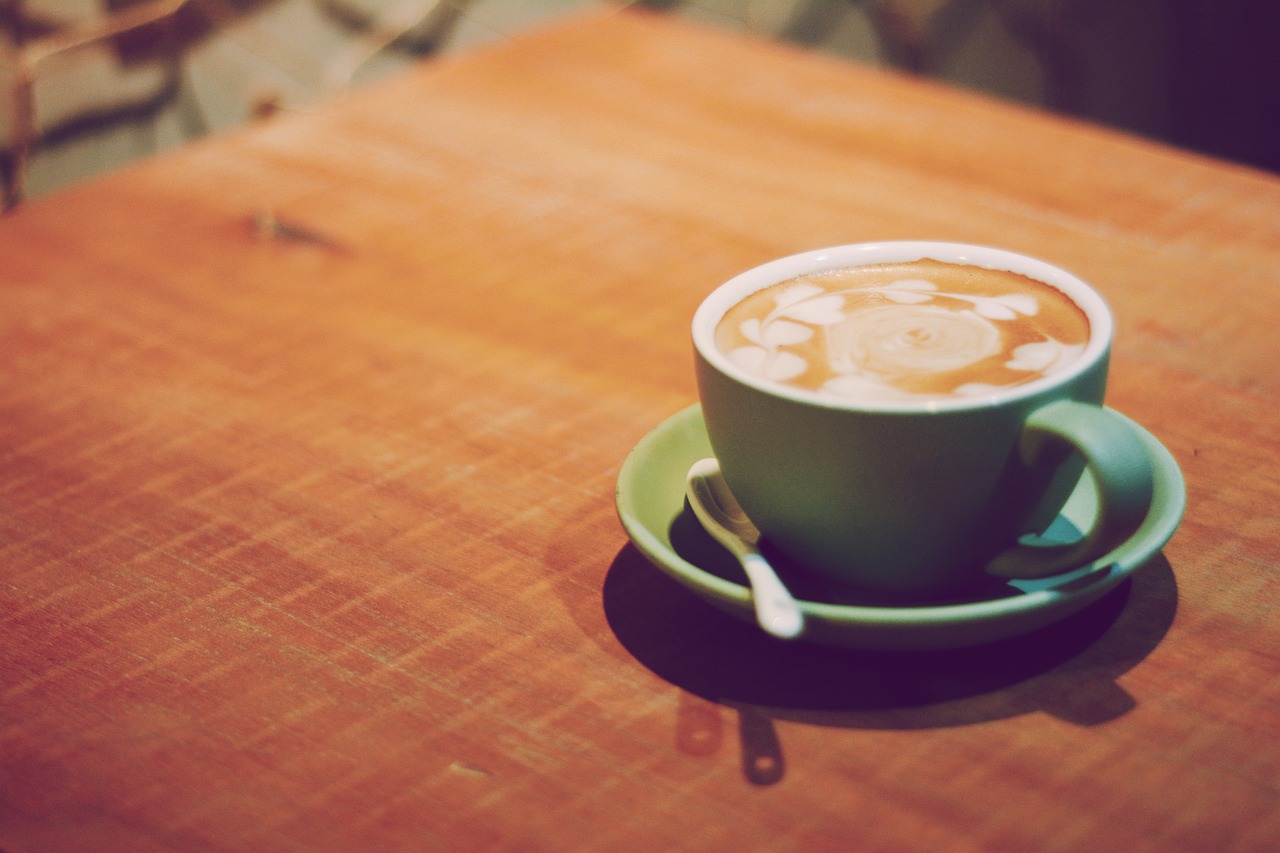Coffee has long been a beloved companion to artists and writers throughout history, igniting creativity and inspiring countless masterpieces. From the vibrant cafés of Paris in the 1920s to the cozy corners of modern-day coffee shops, the rich aroma and bold flavor of this beloved beverage have woven themselves into the very tapestry of literature and art. Join us as we embark on a journey to explore the profound influence of coffee on the creative process, uncovering its secrets and unlocking the door to a world where imagination flourishes with every sip. So grab a cup of your favorite brew and prepare to embark on a caffeinated adventure unlike any other.

Literature
The depiction of coffee in literature
Coffee, with its enchanting aroma and invigorating taste, has found its way into the pages of literature throughout the ages. From coffeehouses being the backdrop for intellectual discussions and artistic exchanges to the daily rituals of sipping a warm cup of coffee, the portrayal of coffee in literature is rich and varied. Authors often use coffee as a means to create a sense of comfort, camaraderie, and even addiction within their characters. The act of brewing, pouring, and savoring coffee becomes a sensory experience that connects readers to the characters on a deeper level.
Coffee as a symbol in literature
In literature, coffee often serves as a symbol of social interaction and conversation. It represents the coming together of individuals, the exchange of ideas, and the creation of connections. Just as coffee brings people together in cafes and coffeehouses, it acts as a metaphor for the gathering of minds in the realm of literature. Coffee is a symbol that transcends language and culture, uniting characters and readers alike.
Cafes as literary gathering places
Cafes have long been literary gathering places, serving as creative sanctuaries for writers, artists, and intellectuals. These cozy corners of the world provide a conducive environment for literary discussions, brainstorming sessions, and artistic inspiration. With their comfortable ambiance, warm drinks, and the gentle clatter of cutlery, cafes become spaces where stories are born, characters are developed, and ideas are exchanged. The hum of conversation and the aroma of freshly brewed coffee create an atmosphere that nurtures creativity and stimulates the imagination.
Art
Coffee as a subject in visual art
Coffee has not only found its place in literature but also in visual art. From still life paintings to modern art installations, coffee has been a popular subject for artists throughout history. Artists have captured the elegance of a coffee cup, the swirls of steam rising from it, or even the simple act of pouring coffee into a saucer. The beauty and allure of coffee make it a visually appealing subject, allowing artists to explore its texture, color, and composition in their works.
Coffeehouses as artistic hubs
Just as cafes have been hubs for literary gatherings, they have also played a crucial role in the art world. Coffeehouses have provided a haven for artists to showcase their work, engage in artistic discussions, and seek inspiration. These artistic hubs serve not only as a platform for emerging artists to display their creations but also as a space for established artists to connect with one another and collaborate. Coffeehouses have fostered a sense of artistic community, fueling the exchange of ideas and the growth of artistic movements.
The role of coffee in artistic inspiration
Coffee has been lauded for its role in artistic inspiration. The caffeine in coffee acts as a stimulant, enhancing focus and alertness. Artists throughout history have turned to coffee as a means to boost their creativity and productivity. The ritual of brewing and consuming coffee can create a sense of ritual and structure, which can help artists find their creative flow. The jolt of energy provided by coffee fuels the imagination, allowing artists to delve into their thoughts and ideas with renewed vigor.

Coffee as a Symbol
Coffee as a symbol of conversation and social interaction
In literature and art, coffee has often been used as a symbol of conversation and social interaction. The act of sharing a cup of coffee with someone signifies openness, connection, and the willingness to engage in meaningful dialogue. Whether it is a casual chat over a morning coffee or a deep discussion in a coffeehouse, coffee becomes a conduit for human connection and understanding. It represents the warmth and comfort of human interaction, reminding us of the importance of building relationships and fostering community.
Coffee as a symbol of productivity and work
Coffee has long been associated with productivity and work. In literature and art, coffee is often depicted as a fuel for the creative process or a stimulant for intellectual pursuits. The act of drinking coffee becomes a symbol of dedication, discipline, and the desire to achieve. Whether it is a writer burning the midnight oil with a cup of coffee by their side or an artist immersing themselves in their creative process, coffee is a tangible representation of the commitment and passion required to produce meaningful work.
Coffee as a symbol of pleasure and leisure
While coffee has its practical associations, it is also a symbol of pleasure and leisure. The act of savoring a cup of coffee becomes a moment to pause, indulge, and enjoy life’s simple pleasures. In literature and art, coffee is often depicted as a source of comfort, a moment of respite from the demands of daily life. It symbolizes the importance of self-care, relaxation, and taking the time to appreciate the small joys that coffee can provide.
Cafes and Coffeehouses in Literature
Historical context of cafes and coffeehouses
Cafes and coffeehouses have a rich historical context that spans centuries. These establishments first emerged in the Middle East in the 16th century and quickly spread to Europe. Coffeehouses became vibrant hubs for social, cultural, and intellectual activities. In literature, the historical context of cafes and coffeehouses often adds depth to the narrative, portraying them as places where ideas were exchanged, friendships were formed, and social and cultural movements were shaped.
Famous literary cafes and their impact
Numerous famous literary cafes have left an indelible mark on the literary world. The Cafe de Flore and Les Deux Magots in Paris, for example, were frequented by renowned writers such as Ernest Hemingway and Simone de Beauvoir. These literary cafes became meeting grounds for intellectuals and artists, where they engaged in passionate discussions and found inspiration for their work. The influence of these cafes on the literary world cannot be understated, as they served as catalysts for artistic movements, shaping the course of literature.
The portrayal of coffeehouses in literature
In literature, coffeehouses have been portrayed as vibrant and bustling spaces, fueled by the energy of passionate conversations and intellectual exchanges. These establishments are depicted as meeting grounds for artists, writers, and thinkers, where they find inspiration and camaraderie. Whether it is the Vienna coffeehouses of the 19th century or the bohemian cafes of Paris, literature often highlights the unique atmosphere and sense of community that coffeehouses provide. They are painted as vital settings for the development of characters and the exploration of ideas.

Depiction of Coffee in Literature
Coffee as a daily ritual
In literature, coffee is often depicted as a beloved daily ritual. Characters may have their specific morning coffee routine, emphasizing the comfort and familiarity that coffee provides. The act of brewing coffee, smelling its aroma, and taking that first sip becomes a routine that grounds characters in their daily lives. This portrayal of coffee as a ritual showcases its significance in providing a sense of normalcy and routine amidst the chaos of life.
Descriptive language used to depict coffee
Authors often use descriptive language to vividly depict the sensory experience of coffee. From the aroma of freshly ground beans to the taste of a perfectly brewed cup, the language used to describe coffee allows readers to vicariously experience its allure. Words like “earthy,” “aromatic,” and “rich” paint a picture of coffee that goes beyond mere words, immersing readers in the sensory world of the characters. The descriptive language used to depict coffee enhances the reading experience, making it more engaging and immersive.
The sensory experience of coffee
In literature, the sensory experience of coffee goes beyond taste and smell. Coffee becomes a multisensory experience that engages sight, touch, and even sound. The sight of swirling cream in a dark cup, the warmth of the ceramic against one’s hand, and the gentle clinking sound of a spoon stirring in the coffee all contribute to the immersive depiction of coffee in literature. By evoking multiple senses, authors transport readers to the world of their characters, enabling them to fully experience the pleasure of coffee.
Coffee in Visual Art
Still life paintings featuring coffee
Coffee has been a popular subject in still life paintings throughout art history. Artists capture the aesthetic beauty of coffee cups, the steam rising from them, and the interplay between light and shadow. Still life paintings featuring coffee often evoke a sense of tranquility and coziness, inviting viewers to take a moment of pause and appreciate the simple pleasure of a cup of coffee. These paintings represent a timeless celebration of the visual allure and symbolic significance of coffee in art.
Coffee advertisements in art
Coffee advertisements have also found their place in the realm of visual art. From vintage posters to contemporary digital art, coffee advertisements showcase the allure of coffee and its role in our daily lives. These artful representations of coffee serve to entice viewers, inviting them to indulge in the pleasures of coffee. Coffee advertisements in art not only promote coffee as a consumer product but also celebrate its aesthetic appeal and cultural significance.
Coffee as a motif in art history
Coffee has served as a recurring motif in art history, symbolizing various themes and ideas. Whether it is the depiction of coffee as a sign of wealth, a symbol of intellectual pursuits, or an emblem of leisure, coffee has played a versatile role in art. Artists have used coffee as a motif to convey concepts such as social class, the pursuit of knowledge, or the quest for personal enjoyment. The presence of coffee in art history reflects its cultural and social significance across different eras and contexts.
Coffeehouses as Cultural Hubs
Historical significance of coffeehouses
Coffeehouses hold a significant place in history, serving as centers of cultural and intellectual exchange. In the 17th and 18th centuries, coffeehouses became breeding grounds for new ideas and discussions, contributing to the development of a more informed and connected society. The accessibility of coffeehouses allowed people from various backgrounds to come together, fostering a sense of community and encouraging the exchange of knowledge. Coffeehouses played a crucial role in shaping the intellectual and cultural landscape of their time.
Intellectual and artistic gatherings in coffeehouses
Coffeehouses have hosted countless intellectual and artistic gatherings, providing a space for thinkers and creators to come together and share their perspectives. These establishments became melting pots of ideas, where individuals from different walks of life could engage in stimulating conversations and debates. Coffeehouses facilitated the exchange of knowledge across disciplines, leading to collaborations and new creative ventures. The vibrant atmosphere and intellectual energy of coffeehouses continue to attract those seeking intellectual and creative stimulation.
Impact of coffeehouses on society
The impact of coffeehouses on society cannot be overstated. These cultural hubs provided a platform for marginalized voices and helped challenge the established norms of their time. Coffeehouses acted as incubators for social, political, and artistic movements, where radical ideas could find an audience and gain momentum. By fostering a spirit of open dialogue and inclusiveness, coffeehouses played a crucial role in giving rise to new perspectives and shaping societal change.
Impact of Coffee on Creativity
The association between coffee and creativity
For centuries, coffee has been associated with creativity and artistic endeavors. The process of brewing and consuming coffee serves as a sensory ritual that can create an environment conducive to inspiration. The act of making coffee can become a meditative experience, allowing the mind to wander and ideas to flow freely. The caffeine in coffee acts as a stimulant, enhancing focus and alertness, which can be beneficial for creative thinking. The association between coffee and creativity has become deeply ingrained in our cultural understanding.
The stimulant effects of coffee on artistic output
The stimulant effects of coffee on artistic output have been widely acknowledged. The increased alertness and energy provided by coffee can boost productivity and motivation, allowing artists to overcome creative blocks and dive into their work. The ability of coffee to sharpen focus and enhance cognitive function supports the creative process, helping artists channel their ideas and visions into tangible forms. The stimulant effects of coffee have become a trusted tool for artists seeking to harness their creative potential.
Coffee rituals as a source of inspiration
The rituals associated with coffee can serve as a source of inspiration for artists. From the act of grinding beans to the careful preparation of a pour-over or the artistry involved in latte art, coffee rituals engage both the mind and the senses. These rituals create a sense of rhythm and structure, providing artists with a familiar and comforting foundation from which to explore their creativity. The process of engaging in coffee rituals can help artists find moments of mindfulness and clarity, igniting their imagination and facilitating the flow of ideas.
Coffeehouses and Literary Movements
The influence of coffeehouses on literary movements
Coffeehouses have played a crucial role in shaping literary movements throughout history. These vibrant spaces provided a platform for writers to exchange ideas, form literary circles, and challenge traditional literary conventions. Coffeehouses acted as incubators for literary experimentation, allowing new voices and perspectives to emerge. The stimulating atmosphere of coffeehouses, coupled with the camaraderie among writers, fueled the development of literary movements and pushed the boundaries of artistic expression.
Coffeehouses as meeting places for writers
Coffeehouses have historically served as meeting places for writers, offering a space for literary camaraderie and creative collaboration. Writers would gather in these establishments to discuss their works, share their progress, and seek feedback from their peers. The exchange of ideas and constructive criticism that took place in coffeehouses allowed writers to refine their craft and push the boundaries of their artistic expression. Coffeehouses became essential spaces for writers to connect with like-minded individuals and find their literary community.
Coffee as a catalyst for creativity
Coffee, with its stimulating effects and the vibrant atmosphere of coffeehouses, has served as a catalyst for creativity in the literary world. The act of sipping coffee while engaged in lively discussions or immersed in the creative process can activate the mind, fuel inspiration, and encourage innovative thinking. Coffee has become intertwined with the creative journey of writers, sparking their imagination, and helping them navigate the complexities of the creative process.
The Evolution of Coffee in Art
Early depictions of coffee in art
Early depictions of coffee in art can be traced back to the 16th century, with the rise of coffee’s popularity in Europe. Artists captured the rituals and customs associated with coffee drinking, showcasing the exotic allure of this new beverage. Paintings from this era often depicted individuals engaged in leisurely conversations over a cup of coffee or depicted the vibrant scenes of coffeehouses. These early representations of coffee in art reflected its cultural significance and introduced viewers to the world of coffee.
Coffee’s changing representation in different art movements
Throughout the history of art, coffee’s representation has evolved in tandem with different art movements. From the romanticized depictions in traditional paintings to the abstract interpretations in modern art, coffee has taken on various forms and meanings. Each art movement has brought its unique perspective and aesthetic to the portrayal of coffee, reflecting the changing societal attitudes towards coffee and its cultural symbolism. The evolution of coffee’s representation in art is a testament to its enduring relevance and its ability to adapt to different artistic contexts.
Contemporary artists and their use of coffee
Contemporary artists have continued to explore and integrate coffee into their work, pushing the boundaries of artistic expression. Coffee has become both the subject and medium of artistic creations, as artists experiment with coffee stains, coffee grounds, and even coffee-infused paints. These innovative uses of coffee in art challenge conventional techniques and materials, blurring the line between coffee and artistic creation. Contemporary artists continue to find inspiration in the rich cultural history of coffee, infusing it into their artistic practices and engaging viewers in new and exciting ways.
In conclusion, coffee’s influence in literature and art is undeniable. From its portrayal as a symbol of connection and productivity to its depiction in descriptive language and visual art, coffee has permeated the realms of creativity. Cafes and coffeehouses have served as hubs for literary and artistic movements, fostering a sense of community and camaraderie. By examining the portrayal of coffee in literature and art, we gain a deeper understanding of its cultural significance and its ability to inspire and ignite creativity. So as you sit down with a steaming cup of coffee, take a moment to appreciate the rich world of coffee in literature and art that surrounds you.

